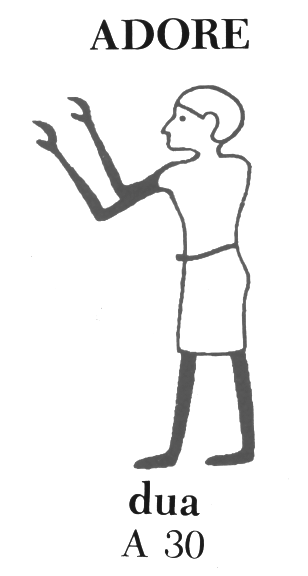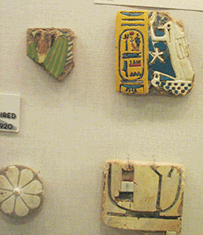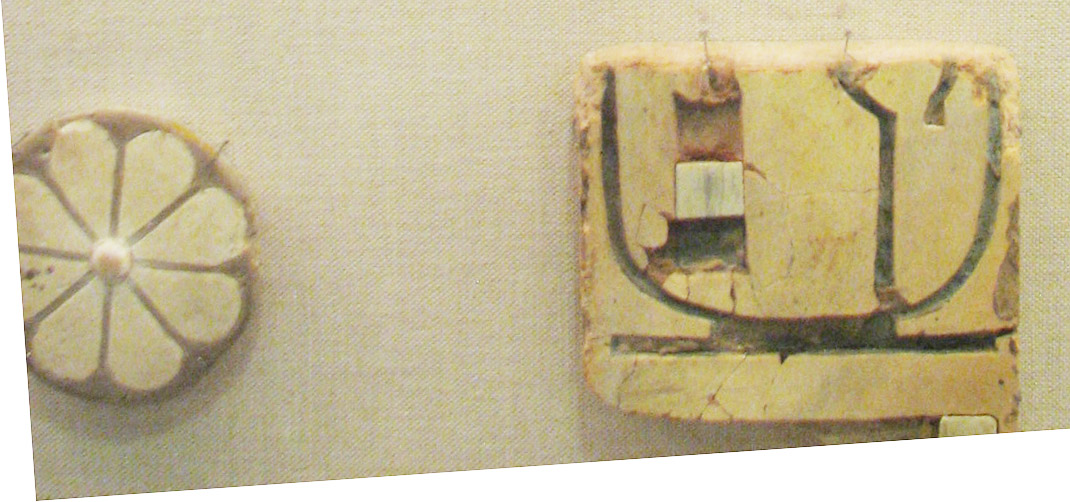(From _Ancient Egypt: Treasures of the Oriental Institute_, by Emily Teeter, page 61):
"Doorways in the palace of Ramesses III at Medinet Habu were decorated with brightly glazed tiles. The tiles were not only colorful additions to the décor of the palace, but their motifs also expressed the power and authority of the king.
"The tile with the bird bears a motto praising the king. This is composed of a lap-wing (Vanellus cristatus), the hieroglyph for 'Egyptian people.' A basket, shown as a half circle under the bird, means 'all.' The star in the center of the tile is the verb to 'give praise.' Together, these elements spell the wish that 'all the Egyptian people give praise.' The object of adoration is the name of the king that appears in a cartouche to the left. This composition illustrates how hieroglyphs could be recombined and embedded into scenes. The uplifted human arms that emerge from the bird's breast are the usual determinative for the writing of the verb 'to praise.' Here they have been added to the lapwing to more explicitly stress the fact that it is all the people who adore the king."

From Richard Wilkinson's _Reading Egyptian Art_
|







